Last updated in March 2024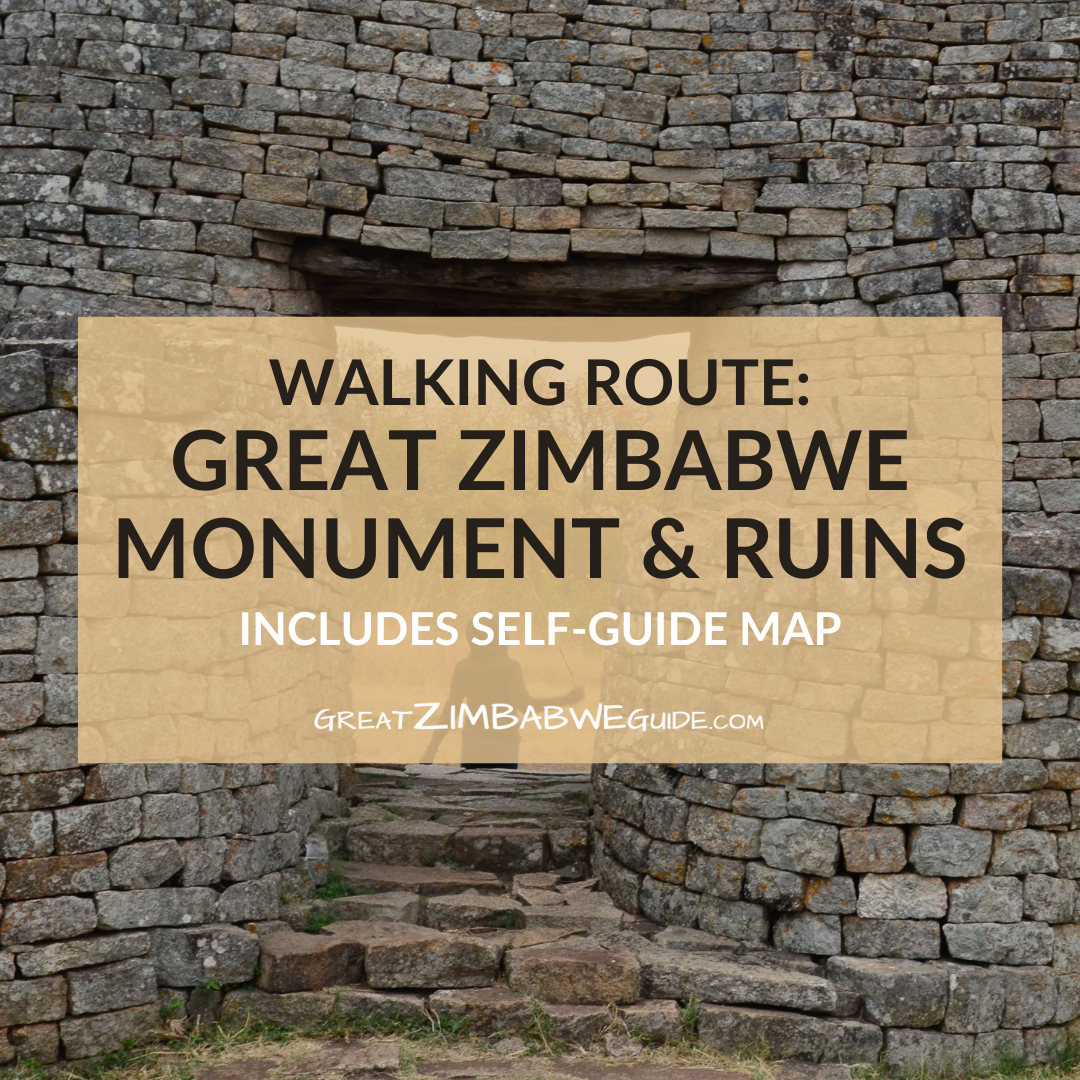
Walking around Great Zimbabwe Monument & Ruins
Written by Beth
Introduction to Great Zimbabwe Monument
Great Zimbabwe Monument & Ruins are easy to walk around for the most part. It covers an area of over 7 square kilometres (nearly 3 square miles). This fascinating, sometimes haunting monument comprises a number of historic archaeological sites and stone ruins and three main zones in particular: The Hill Complex, The Valley Complex and The Great Enclosure.
If you’d like a walking route around the site, or are just interested in Great Zimbabwe ruins, read on!
This is the very place from which the country of Zimbabwe got its name. Safe to say, it’s hugely important to many Zimbabweans, as well as anyone interested in African culture and archaeology. Due to the impressive size of the drystone walls and the abundance of natural beauty around, Great Zimbabwe Monument is also fun for kids and non-history buffs to experience. Read more about the History of Great Zimbabwe here, and remember that our complete Travel Guide to Great Zimbabwe is here.
UNESCO has given Great Zimbabwe Monument a World Heritage Site status, calling it “the greatest stone monument in Africa south of the Sahara”. It was originally built between 1200 and 1500 AD, long before foreigners penetrated the African continent.
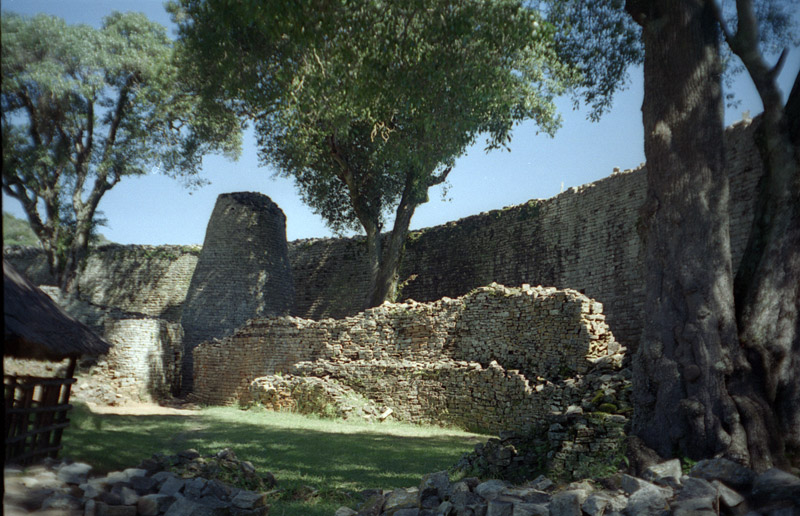
How long does it take to walk around Great Zimbabwe Monument & Ruins?
If you’re short on time and are a fast walker, you could see the whole of Great Zimbabwe in a couple of hours, but it’s best to dedicate about 4 hours to walk around, have some food, and soak up the historic and inexplicably mysterious atmosphere.
The ground around the Valley Complex and Great Enclosure is mostly flat, although it is a natural area that is sometimes bumpy underfoot. There are sandy, unpaved pathways around this lower part of the monument.
The Hill Complex or Acropolis requires slightly more fitness and is not suitable for people who are unused to hiking or walking up a gradient. Visitors who are not comfortable hiking up the hill will be happy sitting under the shady trees at the picnic area enjoying seeing the aloes and birdlife while others hike up the hill.
For information on how to get to Great Zimbabwe, near Masvingo in south-eastern Zimbabwe, see the article Great Zimbabwe travel guide. Great Zimbabwe is under the jurisdiction of the National Museums and Monuments department of Zimbabwe, rather than the National Parks department.
How much does it cost to visit Great Zimbabwe Monument?
The entrance fee is US $5 for Zimbabwe residents and US $15 for non-residents. Children pay $3 for residents and $8 for non-residents (last checked March 2024; also see the NMMZ website services/products section for current prices). The fee includes entrance to the on-site museum. When you pay your entrance fee at the gate, you can also hire a government guide to show you around the monument, but when I did this in 2013 the guide wasn’t hugely personable and didn’t give me much extra information that wasn’t in the booklet. Perhaps I just was unlucky; perhaps this was due to the low tourist numbers and low staff … perhaps that particular guide was just having a bad day. Usually I recommend using an official local guide to show you a place, however in this case I’d say go with your gut on the day.
Can I walk around Great Zimbabwe Monument without a guide?
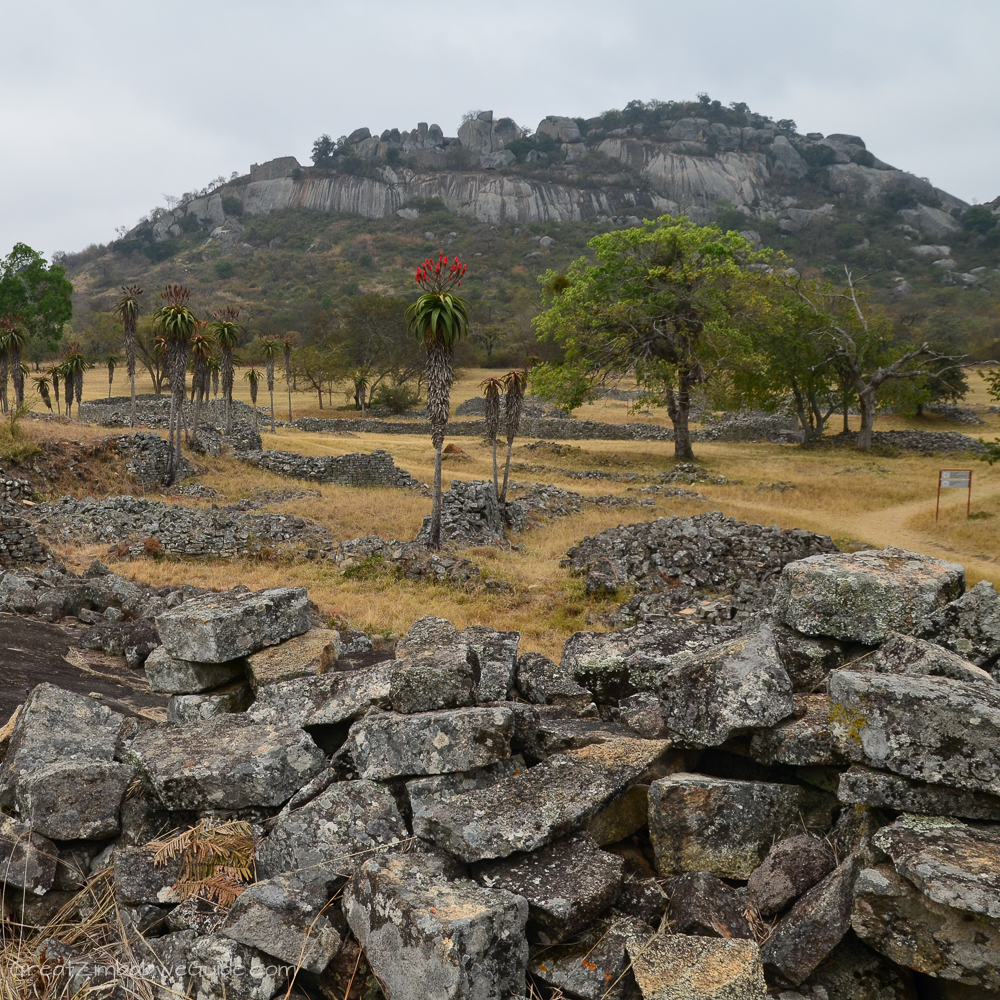 A view from The Valley Complex, with some of the walking paths and aloes behind, and The Hill Complex beyond.
A view from The Valley Complex, with some of the walking paths and aloes behind, and The Hill Complex beyond.
Absolutely. It’s easy to follow the signs and walk around the monument without a guide. There are information booklets available at the curio shop and directional signs around the monument. Of course, if you’re coming as part of an organised tour, the guide from your tour company will likely reveal more nuanced and fascinating details about the area than what’s displayed on the museum walls.
Here’s a map of our recommended self-guided walking route of Great Zimbabwe Monument which we’ll describe in detail below. You can click on the map and use the buttons to zoom in. See the map in full screen.
Self-guided walking route of Great Zimbabwe Monument & Ruins (Google Maps)
You can click on the map and use the buttons to zoom in. See the map in full screen.
TOP TIP: It can get hot in Great Zimbabwe so avoid visiting between 11 am and 2 pm. The best time of day is early morning. Make sure you have a hat, water and sunscreen, and perhaps even an umbrella to use as shade.
Try to avoid carrying heavy bags around the monument.
Recommended walking route around Great Zimbabwe Monument & Ruins
A: Entrance
The entrance is near the car park. This is where you pay the entry fee and hire a government guide, if using. There are toilets here, too.
There is a large picnic area near the car park too, which is a beautiful spot to sit under the large trees.
B: Museum at Great Zimbabwe
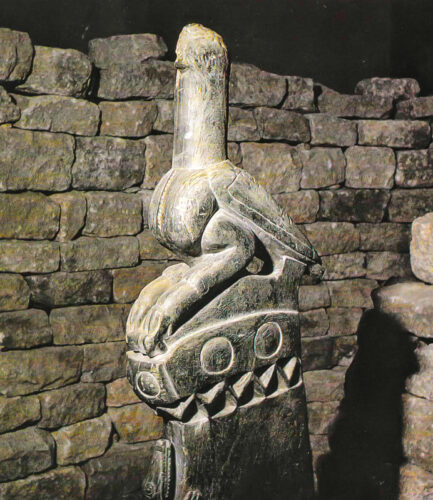
One of the original soapstone birds. Source: Journey Through Zimbabwe, 1990.
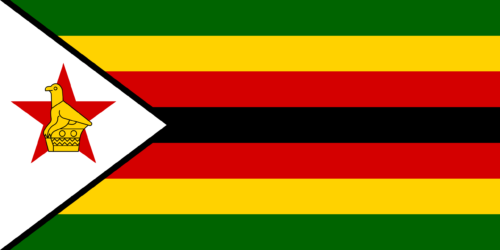
The Zimbabwe bird emblem, visible on the left of the Zimbabwe National Flag.
This is where you can view the soapstone bird carvings that were originally discovered in the Hill Complex, and are now a symbol of Zimbabwe. Eight birds are known to have existed and been found in Great Zimbabwe, but most of them were removed from the country by treasure hunters and traders. Six (and a half) of the birds have been returned, and are back in the museum. Visitors are not allowed to take photos in the museum.
There is some political pro-Zanu-PF propaganda in the museum too which is interesting, but rather detracts from the much earlier history of this area of Africa that is so integral to the ruins.
The museum itself is small and dimly-lit, and I hope that in the future it is expanded to show off Great Zimbabwe’s culture, history and wonders more comprehensively.
After visiting the museum, head north, go past the curio shop (stopping to use the toilets if necessary) and then up to the Hill Complex. We suggest going up the hill via the Modern Path and down via the Ancient Path.
C–E: The Hill Complex or Acropolis
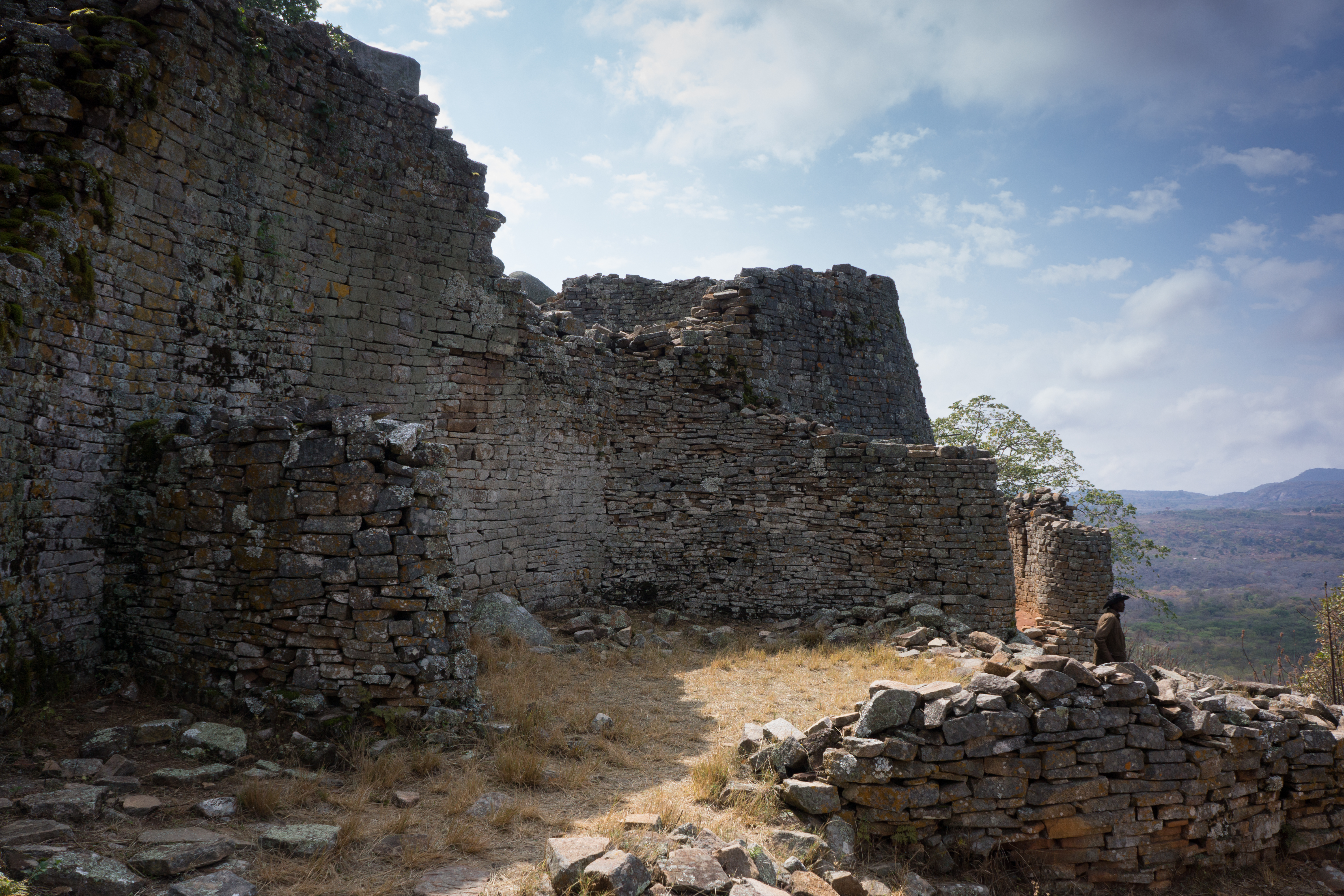 By Fanny Schertzer, Wikimedia Commons.
By Fanny Schertzer, Wikimedia Commons.
The Hill Complex is a series of enclosures built on a granite hill almost 300 feet in height. There are two routes to the top: the ancient ascent, which is steeper but more architecturally beautiful; and the modern ascent which is easier, for visitors less used to inclined hikes. Why not climb up the modern path to the Acropolis, and down the ancient path, to see both? Both are single-file paths.
The Hill Ruins were continuously inhabited from the 11th to 15th centuries and it’s easy to see why they were the stately residence, allowing the upper class a sweeping view over the valley. The walls curve gently with the contours of the rock-hill, making you marvel at the feats of drystone construction. The Western or Royal Enclosure (C) is generally considered the place where the chief lived, although in later years he would move to the Great Enclosure.
Follow the path to the Covered Passage, the Southern Enclosures and the Recess Enclosures, and then on to the Eastern Enclosure (E). This is where six posts topped with varying soapstone bird carvings were found by early explorers. These birds were removed by 19th Century treasure hunters and were scattered as far afield as Cape Town and Germany, but they are slowly being brought back to the museum at Great Zimbabwe. They are believed to represent an African Fish Eagle or Bateleur Eagle, and their image has become collectively known simply as as the Zimbabwe Bird, the emblem on the Zimbabwe flag. The carvings and other relics that were found here indicate that the spirit medium or traditional healer used this enclosure.
The Balcony Platform above is a rocky ledge where the chief or others may have watched the traditional rituals.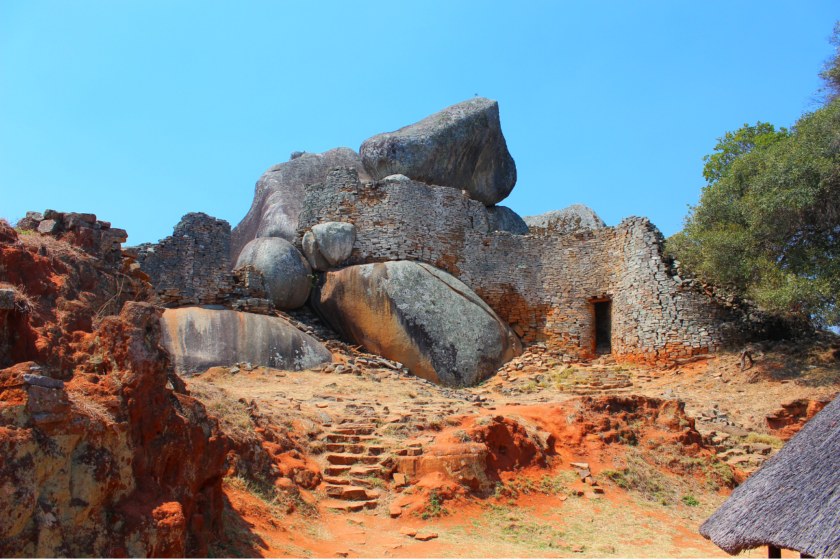
Walk from the Eastern Enclosure to the Gold Furnace Enclosure where gold was smelted and used for trading. Gold jewellery and other valuable artifacts were found at Great Zimbabwe and it’s fascinating to think about the systems of trade and wealth that occurred centuries ago. The next stop here is the Ritual Cave or ledge (F) where you can imagine the leader surveying his people in the valley below, perhaps some of them transporting the thousands of granite stones that were used to create the structures.
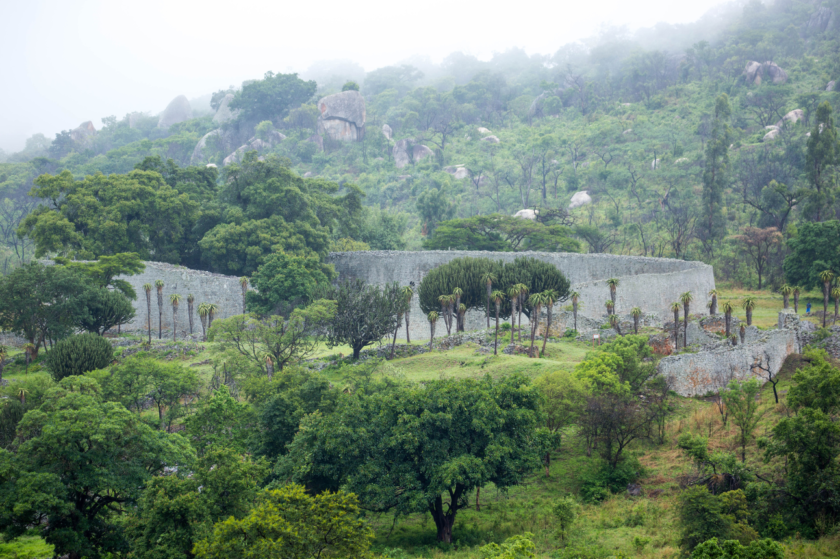 The view of the Great Enclosure from the vantage point of The Hill Complex.
The view of the Great Enclosure from the vantage point of The Hill Complex.
F. Café and Curio Shop
If you need a breather after hiking up the hill, take a few minutes to have a rest at the Café-cum-restaurant. You could try Sadza, a traditional Zimbabwean dish made from maize meal.
The curio shop also sells booklets, giving useful history and information about Great Zimbabwe.
There are also toilets here.
G. The Valley Complex
Scattered in the valley below are a series of smaller drystone walls which are thought to have sectioned households or family groupings. One of the eight soapstone birds – the most intricately carved – was originally found here, so one theory is that the Valley Complex is where the artisans and craftsmen lived.
Remnants of houses made of granitic sand and clay have been found here, and huts were built within the stone walls. It is thought that walls denote each family’s area, generally made of a kitchen, two living huts and a court. There are also many aloes, which were used for medicinal purposes (and make the view even more enjoyable).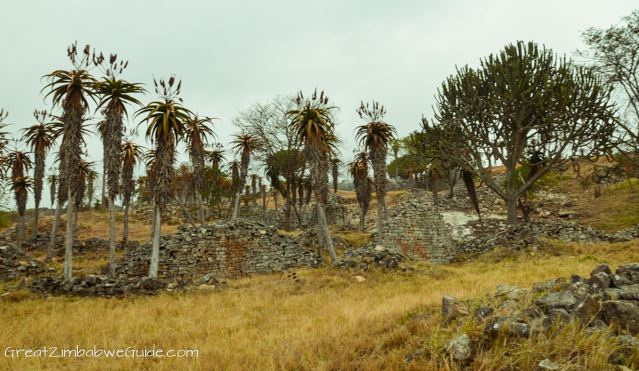
H. Entering The Great Enclosure
The Great Enclosure is along the path past the museum, beneath the hill to the south. It dates from the 14th Century. It was built after the Hill Complex and is bigger and the best preserved of the ruins.
The outer wall, comprised of cut granite blocks, is shaped in an ellipsis. It’s an impressive 278 meters long and up to 9.5 meters high in places, containing more than 15 000 tonnes of granite bricks.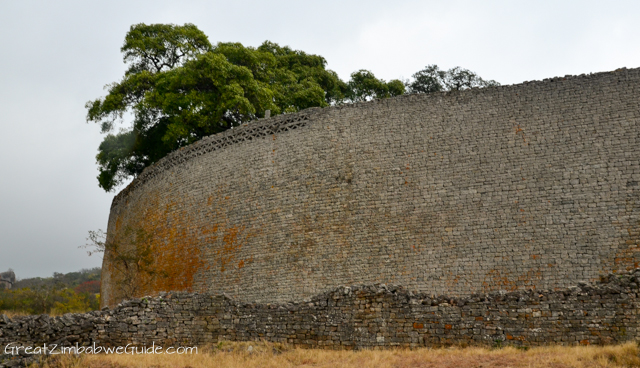
Chevron patterns on the elliptical wall of The Great Enclosure.
The skill of the stonemasons who laid the stones is impressive because of the sheer size of the walls but also because of the detail. Chevron and herringbone patterns run across the top of the walls, said to represent a snake of fertility and the dynastic line, respectively.
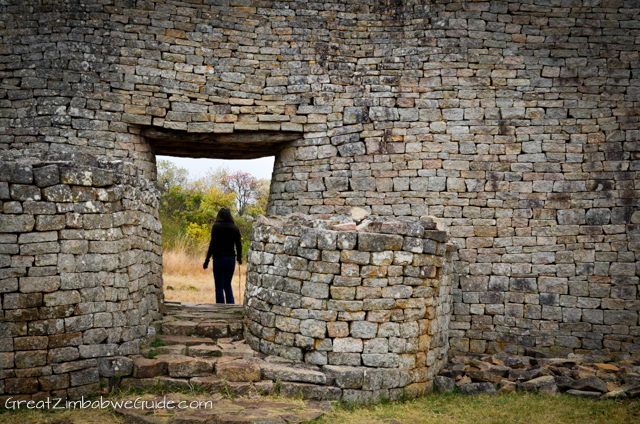
North-East Entrance to The Great Enclosure.
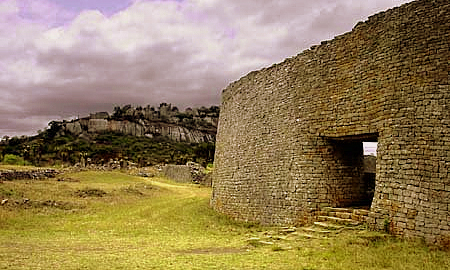
North Entrance to The Great Enclosure (H).
In this walking route, I suggest you enter The Great Enclosure at the North Entrance (H), which is the one furthest away from the Museum (see our map and zoom in to the Great Enclosure section for detail).
The North Entrance will take you to the Parallel Passage which is an atmospheric walkway where you’ll be almost entirely surrounded by the enormous 11-metre high drystone walls. As you walk along this corridor with the trees swaying high above your head, it’s easy to wonder about all the people who may have walked here hundreds of years ago; their way of life and culture.
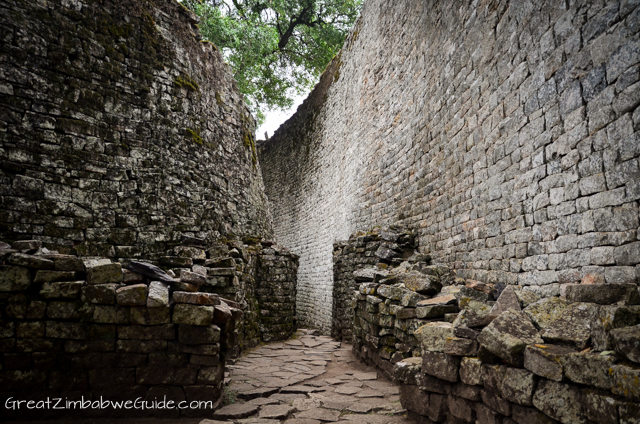
The Parallel Passage in The Great Enclosure.
At the southern section of the Great Enclosure is the famous Conical Tower: a 10-metre column of solid stone bricks. The symbolism and purpose of this structure has been a topic of conversation around many evening firesides. Some say it is a symbol of wealth and power, some say it represents a granary, for the agricultural wealth of the state. 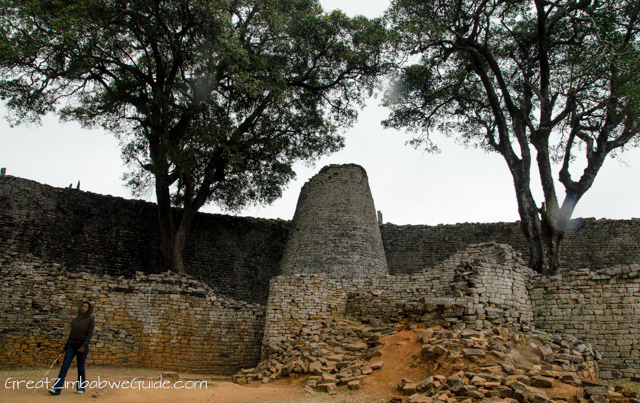
The Conical Tower, standing tall between two large trees.
Take your time walking around this mini-maze of walls and trees, perhaps guessing at the functions of each area. Remember that this is an important archaeological site, so do not dismantle or move anything you see. We haven’t included a walking route within the Great Enclosure itself. If you have time, exit the Great Enclosure and walk around the outside of it too, to study the walls and their stonework details, set against the backdrop of the Zimbabwean countryside.
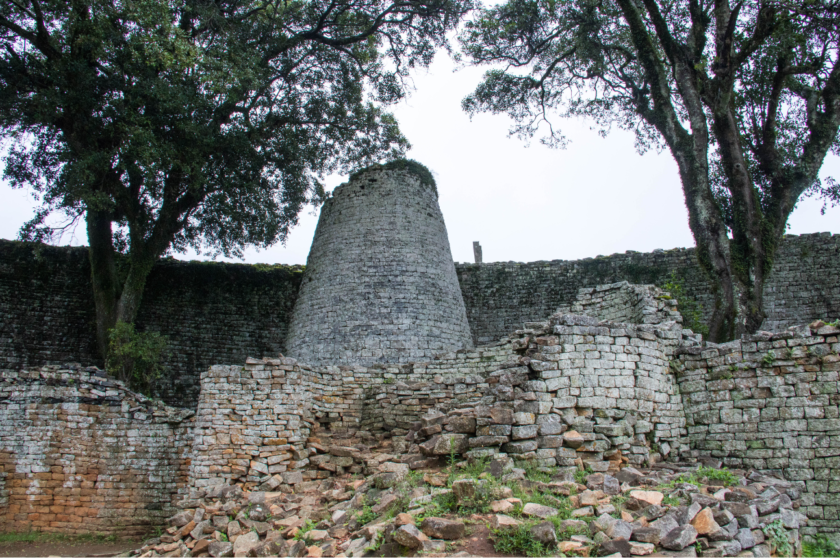
I & J. Traditional Recreated Cultural Village (optional)
This isn’t part of the ancient ruins, but is a reconstructed modern-day traditional African village nearby. It is in walking distance from the Great Enclosure or curio shop.
Visitors can consult a nyanga or traditional healer (for and additional fee), and watch displays of traditional dancing.
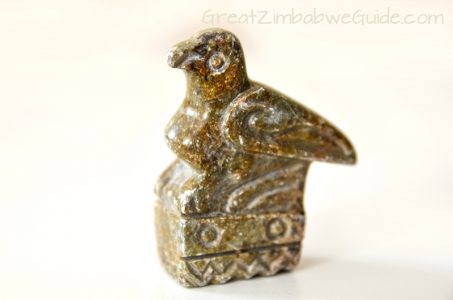
A modern reproduction of one of the Zimbabwe bird carvings, available at many curio shops in Zimbabwe.
You’re done!
Walk back to the car park & entrance (A) via the café and toilets (F), if facilities are needed.
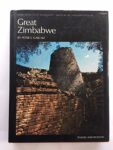 Peter Garlake was considered one of the key students of Great Zimbabwe, and he wrote an important book in 1973 which contains many interesting facts and pictures of Great Zimbabwe Monument and Ruins. It is available on Amazon here: Great Zimbabwe: New Aspects of Antiquity (affiliate link).
Peter Garlake was considered one of the key students of Great Zimbabwe, and he wrote an important book in 1973 which contains many interesting facts and pictures of Great Zimbabwe Monument and Ruins. It is available on Amazon here: Great Zimbabwe: New Aspects of Antiquity (affiliate link).
You can contact the NMMZ government staff for Great Zimbabwe Monument on +263242774208/752876 or email address [email protected].
Here at Great Zimbabwe Guide Travel Blog, we do not run our own tours of Great Zimbabwe Monument: we’re an online guidebook rather than a tour guide 🙂 Please see the Great Zimbabwe Monument travel guide page for information about private guided tours.
Travel advice about Great Zimbabwe, Kyle, Mutirikwi & Masvingo, Zimbabwe
Read more articles about Great Zimbabwe Monument & Ruins
- See the post Great Zimbabwe Monument travel guide for FAQs and info on how to get to the monument
- Where to stay around Great Zimbabwe and Masvingo: Includes map
- An excellent in-depth video from BBC’s Gus Caley-Hayford about Great Zimbabwe
- See this video from CNN about Great Zimbabwe
- A short history of Great Zimbabwe Monument
- Visiting Great Zimbabwe Monument: Photo post
- All posts about Masvingo and Great Zimbabwe
- New to the site? Visit my Quick Reference Guide to Zimbabwe
#ironage #africanhistory #blackhistory #blacktravel #archaeology
About Great Zimbabwe Guide
Great Zimbabwe Guide gives travel tips, information and inspiration about Zimbabwe, Africa. We share stories of Zimbabwe’s talented people, world-class wilderness & wildlife safari experiences, all wrapped up in an unmatched climate.
Do you have a question about visiting Zimbabwe? Start with the Quick-reference list of travel advice.
Follow Great Zimbabwe Guide on social media for even more Zimbabwe travel tips and inspiration: Facebook (@GreatZimbabweGuide) & Instagram(@GreatZimGuide).
To ensure you don’t miss anything, sign up for email newsletters on our Contact page.
Planning a Zimbabwe holiday?
If you’re planning your Zimbabwe holiday (hooray!), I can recommend Go2Africa, Africa’s Leading Safari Company (and one of our affiliates). Go2Africa has been tailor-making safari holidays for thousands of clients from across the globe since 1998. You can research African destinations, accommodation, and more. Even better, you can directly contact their safari specialists who can help you get the African experience that’s perfect for you.
Please do visit the Go2Africa website, or check out their Zimbabwe tours here.

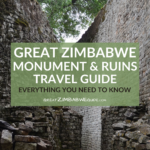
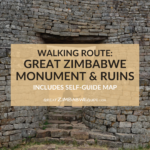
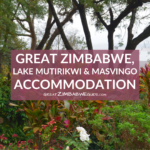
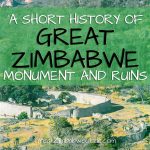
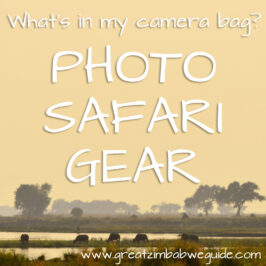
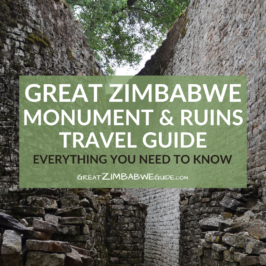


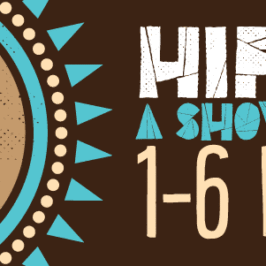


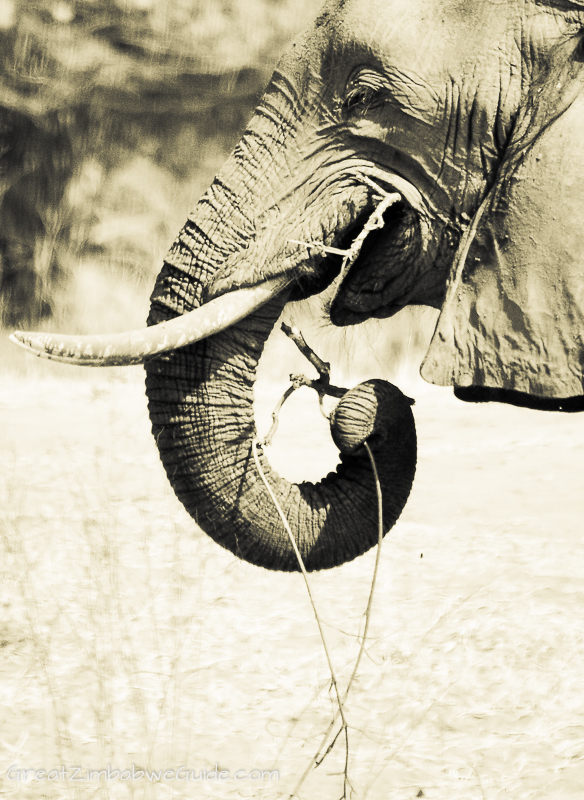
Owen Majingo
How much is 2018 entrance fee per adult and for kids for Great Zimbabwe ruins.. . I want to visit with my team..